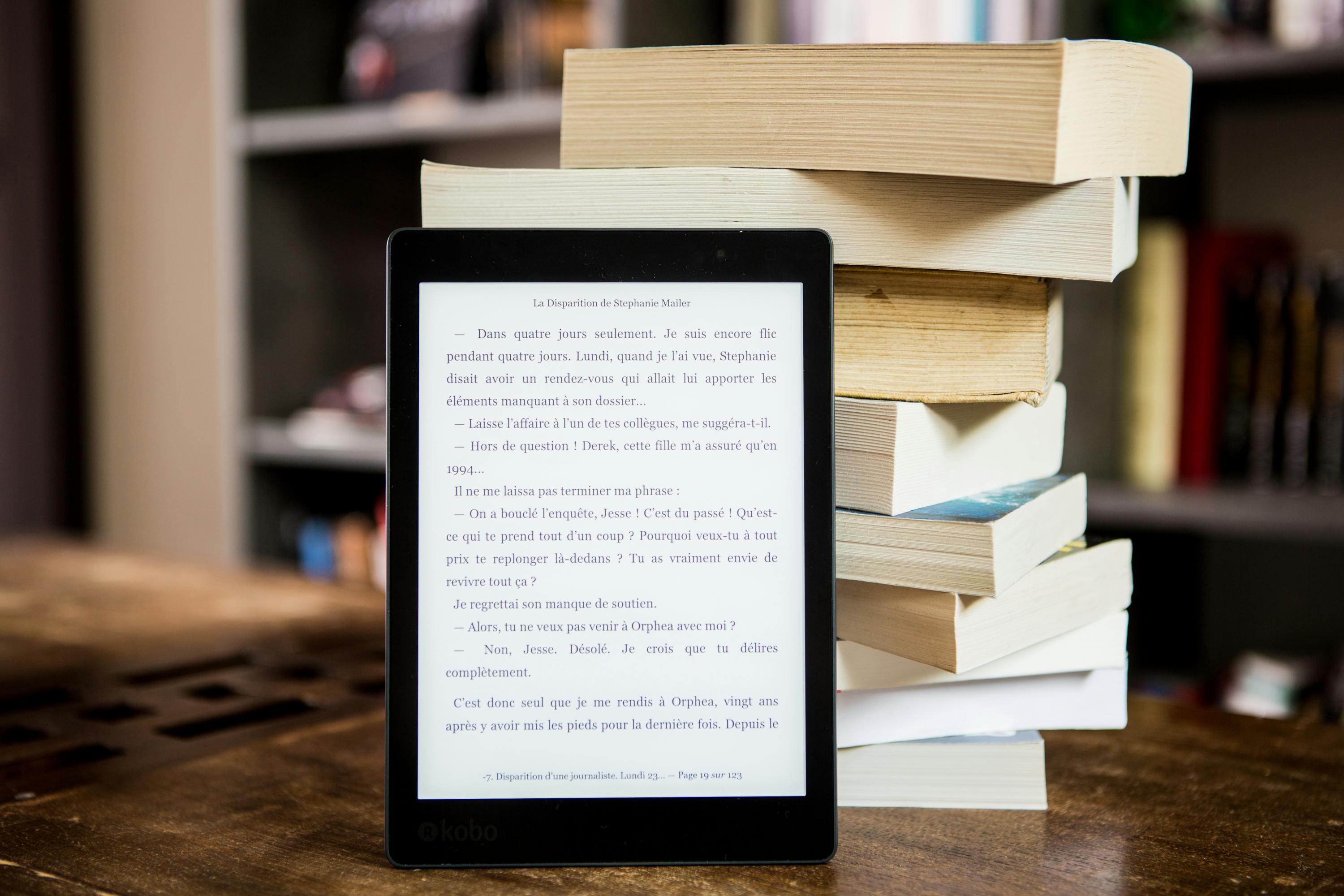E-books: why they have become an integral part of British culture
Electronic books (e-books) have come a long way from their origins as a niche product for tech enthusiasts to a mainstream format that accounts for a significant share of the UK publishing market. Today, e-books are an integral part of the UK reading culture, offering readers convenience, accessibility and choice.

E-books in the UK: From Niche to Mainstream
When e-readers first appeared in the UK market in the late 2000s, skepticism abounded. Many predicted these devices would never replace the tactile experience of physical books in a nation known for its bookshops, libraries, and literary heritage. The initial adoption was limited to tech enthusiasts and business travelers seeking practicality. However, the landscape began shifting dramatically around 2010 with Amazon’s aggressive Kindle marketing and growing smartphone ownership. By 2015, surveys showed nearly a third of British adults had read at least one e-book, marking the transition from niche curiosity to mainstream medium.
This evolution accelerated during the COVID-19 pandemic, with library e-book borrowing increasing by 146% during lockdowns as physical locations closed. Today, e-books account for approximately 20% of all book sales in the UK market, with particularly strong adoption among commuters, older readers with vision or mobility concerns, and younger digital natives who seamlessly integrate e-reading with their connected lifestyles.
Growing Popularity and Key Factors Behind the E-book Boom
Several distinct factors have driven e-book adoption in British society. Convenience stands paramount—the ability to carry hundreds of books on a single device resonates strongly with space-conscious British households and commuters navigating packed trains. Price sensitivity has also played a crucial role, with e-books typically costing 20-30% less than their print counterparts, appealing to value-conscious consumers during economic uncertainty.
Accessibility features have democratized reading for previously underserved populations. Font size adjustment has proven revolutionary for older readers, while text-to-speech functions support those with visual impairments or learning differences like dyslexia. The Royal National Institute of Blind People has documented how e-books have dramatically expanded reading access for nearly two million Britons with sight loss.
Environmental consciousness—a growing priority among British consumers—has further accelerated e-book adoption. Studies suggest a typical e-reader offsets its carbon footprint after about 20-30 e-books compared to purchasing print versions, appealing to environmentally-minded readers concerned with paper usage and publishing industry emissions.
The Cultural Impact of E-books on British Reading Habits
E-books haven’t merely changed how Britons read—they’ve expanded what and when they read. Genre fiction has particularly flourished in the digital realm, with crime, romance, and science fiction seeing disproportionate e-book sales compared to literary fiction. This shift reflects both price sensitivity in genre markets and the privacy that e-readers offer for consuming potentially embarrassing “guilty pleasure” reads on public transport.
Reading timing has also evolved, with surveys indicating British e-book users read more frequently in short bursts throughout the day rather than extended sessions. Night reading has substantially increased, with the backlit screens enabling reading in darkened bedrooms without disturbing partners—a particular boon in Britain’s densely populated urban centers with limited personal space.
Perhaps most significantly, e-books have breathed new life into classic British literature. Projects like Project Gutenberg have made thousands of out-of-copyright works freely available, driving renewed engagement with British literary heritage. Works by Dickens, Austen, and the Brontës consistently rank among the most downloaded free e-books in the UK, suggesting digital formats are supporting, rather than replacing, the nation’s literary traditions.
E-books and British Publishing: An Industry Transformed
The British publishing industry has undergone profound changes in response to e-book proliferation. Traditional publishing houses like Penguin Random House UK and HarperCollins UK have developed sophisticated digital strategies, while new digital-first publishers have emerged. Companies like Canelo and Head of Zeus have pioneered e-book-centric business models that leverage lower distribution costs to publish more diverse voices.
Self-publishing has exploded, with platforms like Kindle Direct Publishing enabling thousands of British authors to bypass traditional gatekeepers. Notable success stories like LJ Ross, whose self-published DCI Ryan mysteries have sold over 7 million copies primarily as e-books, demonstrate how digital publishing has democratized the industry while challenging established business models.
The Future of E-books in British Reading Culture
As technology evolves, e-books continue integrating ever more deeply into British cultural life. Interactive e-books incorporating multimedia elements are gaining popularity in educational settings. Meanwhile, the audiobook-e-book hybrid format—where users can seamlessly switch between reading and listening to the same book—is growing rapidly among time-pressed professionals.
Library lending systems have embraced digital transformation, with services like OverDrive and BorrowBox allowing library members to borrow e-books remotely—a particularly valuable service in rural communities where physical library access may be limited. This digital lending infrastructure proved invaluable during pandemic lockdowns and continues to expand library reach beyond traditional boundaries.
While print books remain culturally significant and represent the majority of the market, e-books have secured their place as a complementary rather than competing format in British reading culture. The evidence suggests most British readers are now “format fluid,” choosing different formats for different reading situations rather than pledging allegiance to either print or digital exclusively.
Conclusion
E-books have evolved from a technological novelty to an integral component of British reading culture through a combination of practical advantages, technological improvements, and cultural adaptation. Their integration represents a characteristically British approach to innovation—embracing new technologies while maintaining connections to literary tradition. As digital and physical reading continue to coexist and complement each other, e-books have secured their place not as replacements for traditional books, but as valuable additions to Britain’s rich reading landscape, ensuring literature remains accessible, relevant, and vibrant in an increasingly digital world.




